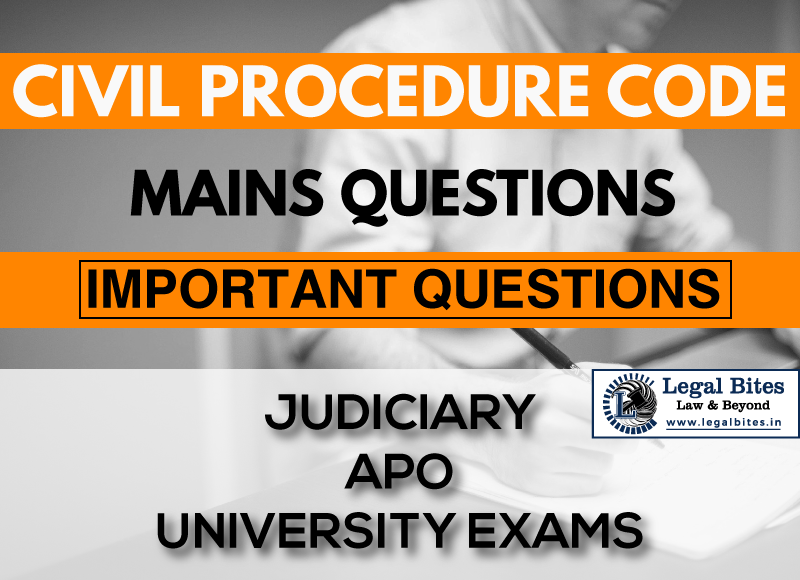A brings a suit against B and C for the recovery of possession of a plot of land. The suit is dismissed against C. ....Explain what remedy is available to C.
Find the answer to the mains question only on Legal Bites

Question: A brings a suit against B and C for the recovery of possession of a plot of land. The suit is dismissed against C for want of causes of action, and is decreed against B. A, in execution of this decree has taken delivery of possession of land in excess of the decree. The excess belongs to C. Explain what remedy is available to C.Find the answer to the mains question only on Legal Bites. [A brings a suit against B and C for the recovery of possession of a plot of land. The suit...
Question: A brings a suit against B and C for the recovery of possession of a plot of land. The suit is dismissed against C for want of causes of action, and is decreed against B. A, in execution of this decree has taken delivery of possession of land in excess of the decree. The excess belongs to C. Explain what remedy is available to C.
Find the answer to the mains question only on Legal Bites. [A brings a suit against B and C for the recovery of possession of a plot of land. The suit is dismissed against C for want of causes of action, and is decreed against B. A, in execution of this decree has taken delivery of possession of land in excess of the decree. The excess belongs to C. Explain what remedy is available to C.]
Answer
In the given scenario, C was initially a defendant in the suit filed by A for the recovery of possession of a plot of land, but the suit was dismissed against C for want of causes of action. The suit, however, was decreed in favour of A against B, resulting in A obtaining a decree for possession of the land against B.
During the execution of the decree against B, A took delivery of possession of the land in excess of what was granted in the decree. The excess portion of the land actually belongs to C, not B.
In such a situation, C has a remedy available to reclaim the excess land wrongfully taken by A. C can file an application for restitution under Section 144 of the Code of Civil Procedure (CPC) in the same court where the decree was executed.
Section 144 of the CPC deals with the principle of restitution, which states that any person who has been dispossessed of any property in execution of a decree, and that decree is subsequently reversed or varied, is entitled to be restored to the possession of the property and to be put in the position he was in before the execution of the decree.
In this case, since the suit against C was dismissed, and A wrongly took possession of the excess land belonging to C during the execution of the decree against B, C can seek restitution of the excess land by filing an application under Section 144 of the CPC. The court will then examine the merits of the case, and if it is satisfied that the excess land indeed belongs to C, it will order the restitution of the land to C and put him back in possession of the property as if the wrongful execution never occurred.
It's important to note that the process of restitution aims to ensure fairness and prevent any injustice caused by the wrongful execution of a decree.
Important Mains Questions Series for Judiciary, APO & University Exams
- CPC Mains Questions Series: Important Questions Part – I of X
- CPC Mains Questions Series: Important Questions Part – II of X
- CPC Mains Questions Series: Important Questions Part – III of X
- CPC Mains Questions Series: Important Questions Part – IV of X
- CPC Mains Questions Series: Important Questions Part – V of X
- CPC Mains Questions Series: Important Questions Part – VI of X
- CPC Mains Questions Series: Important Questions Part – VII of X
- CPC Mains Questions Series: Important Questions Part – VIII of X
- CPC Mains Questions Series: Important Questions Part – IX of X
- CPC Mains Questions Series: Important Questions Part – X of X

Mayank Shekhar
Mayank is an alumnus of the prestigious Faculty of Law, Delhi University. Under his leadership, Legal Bites has been researching and developing resources through blogging, educational resources, competitions, and seminars.
